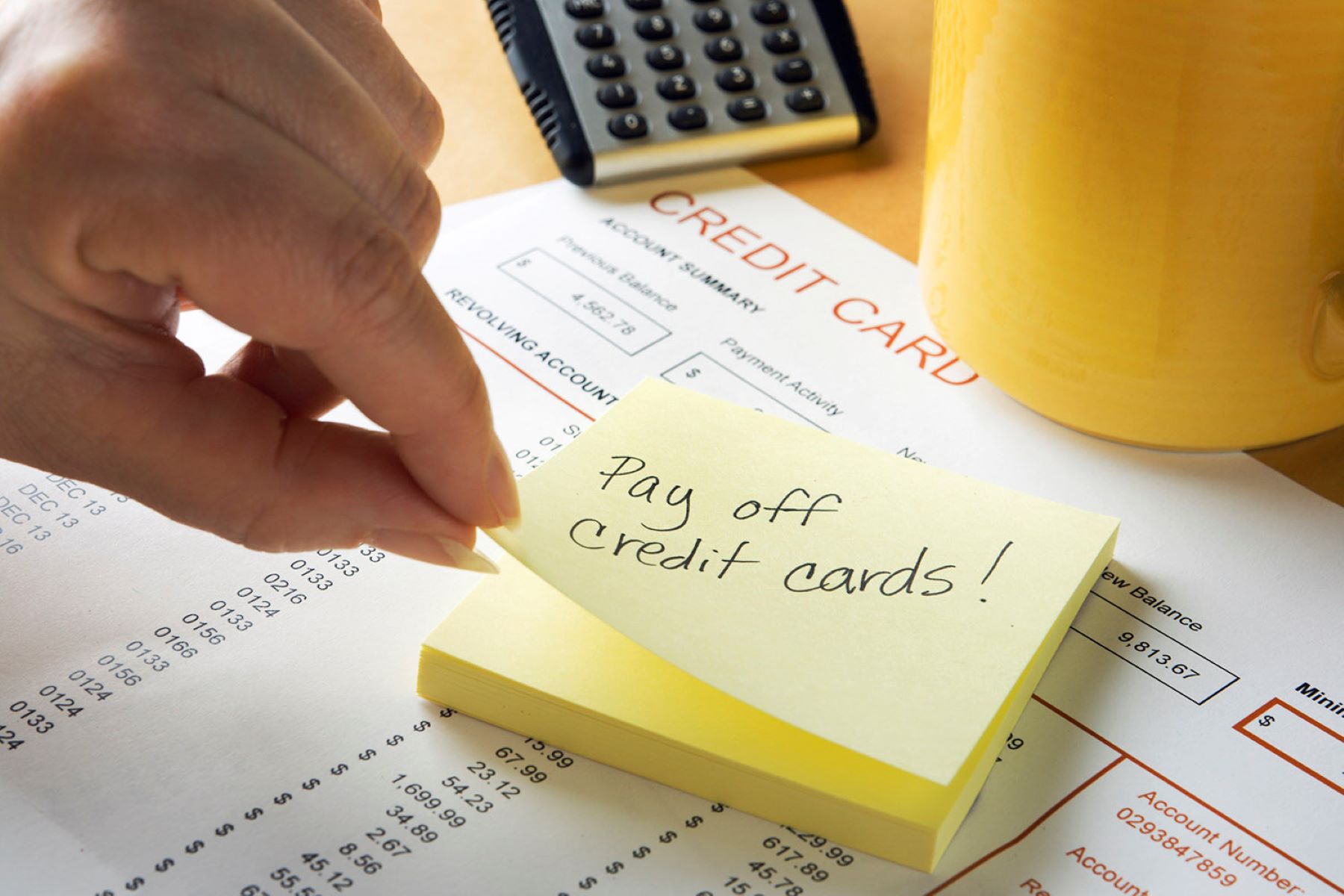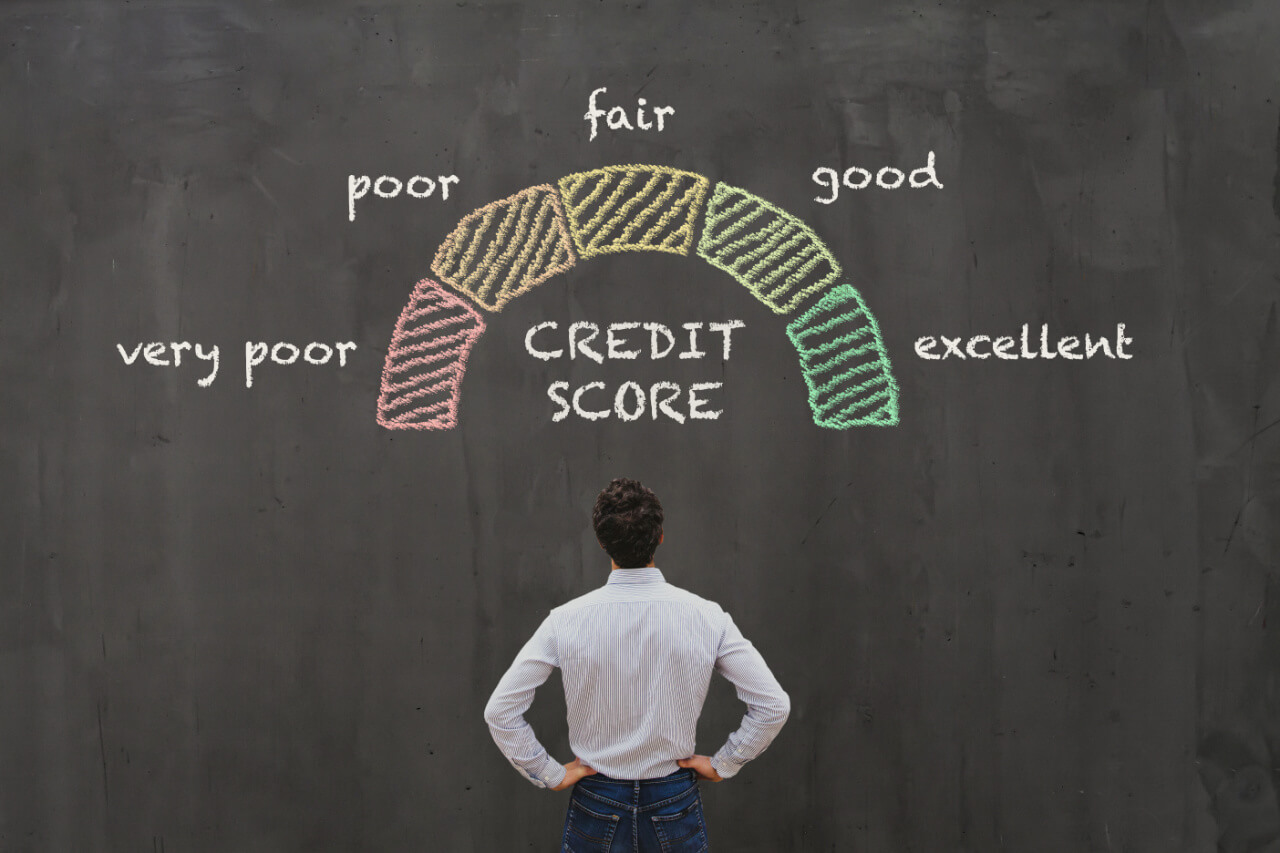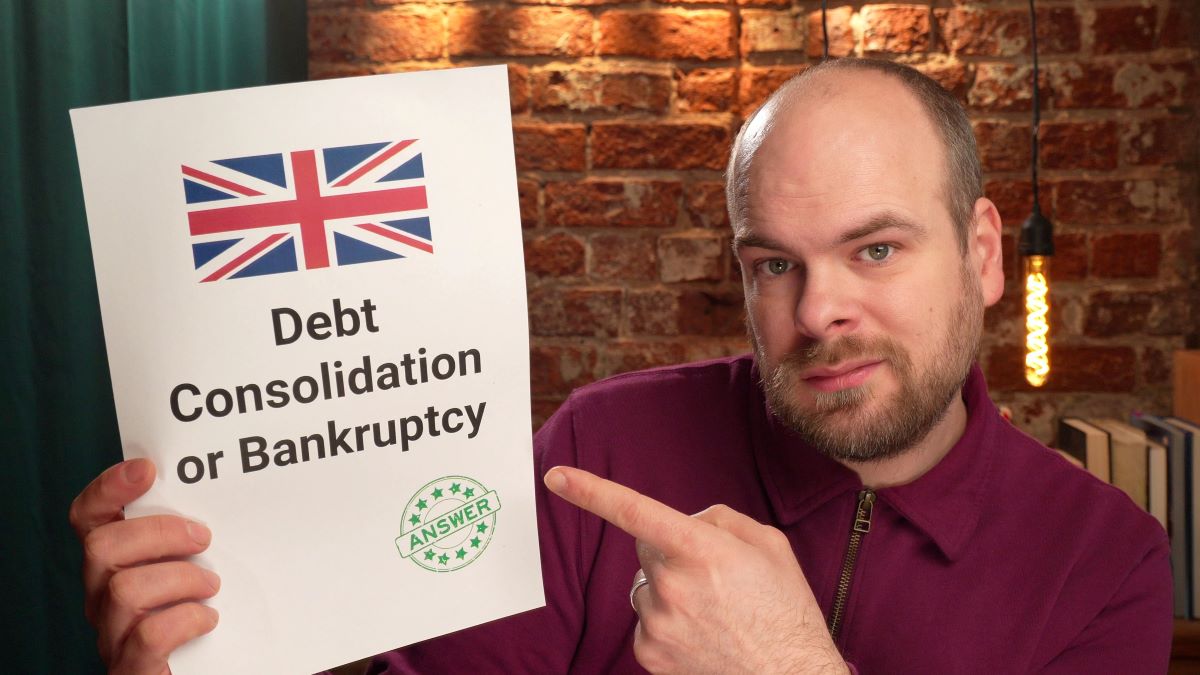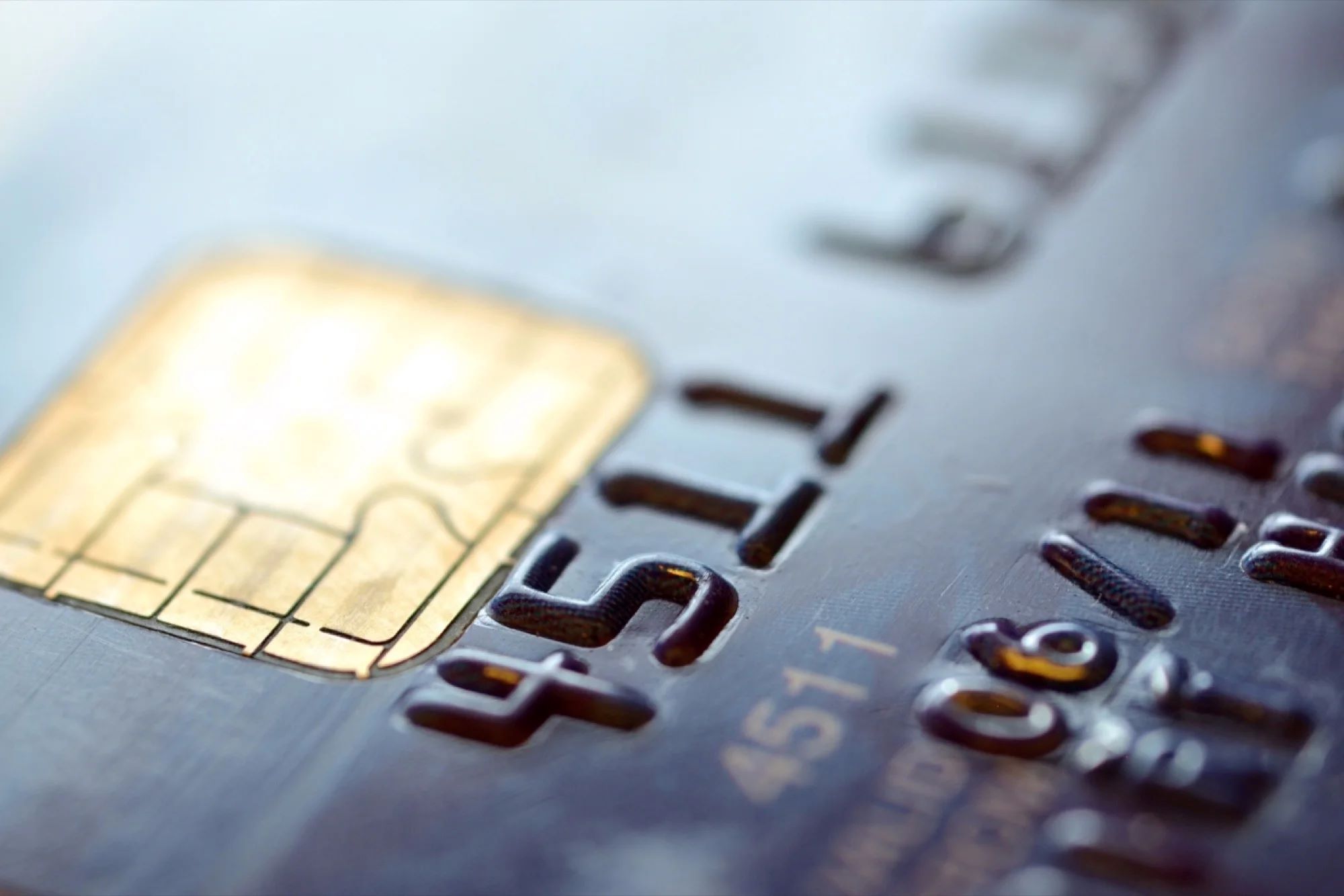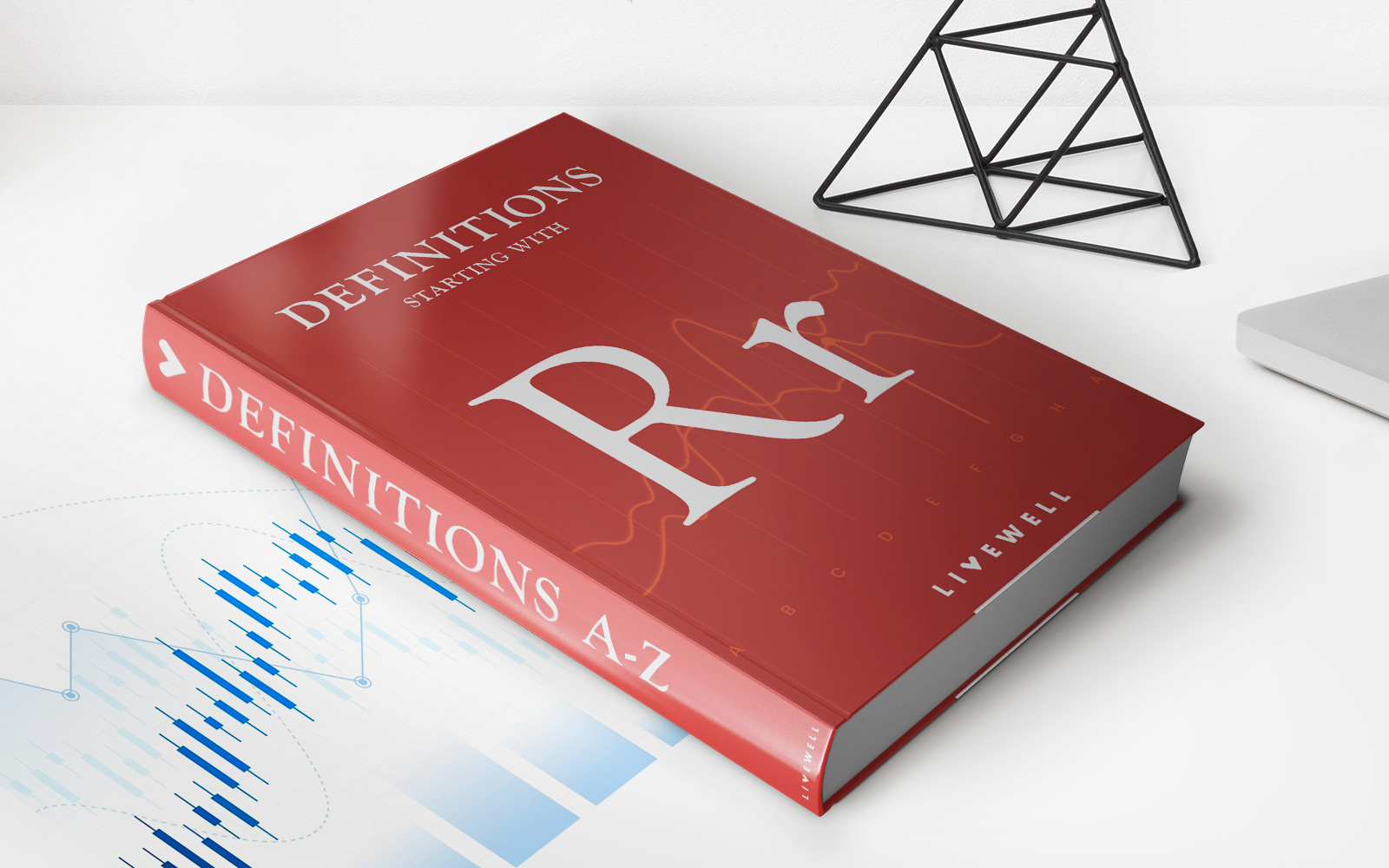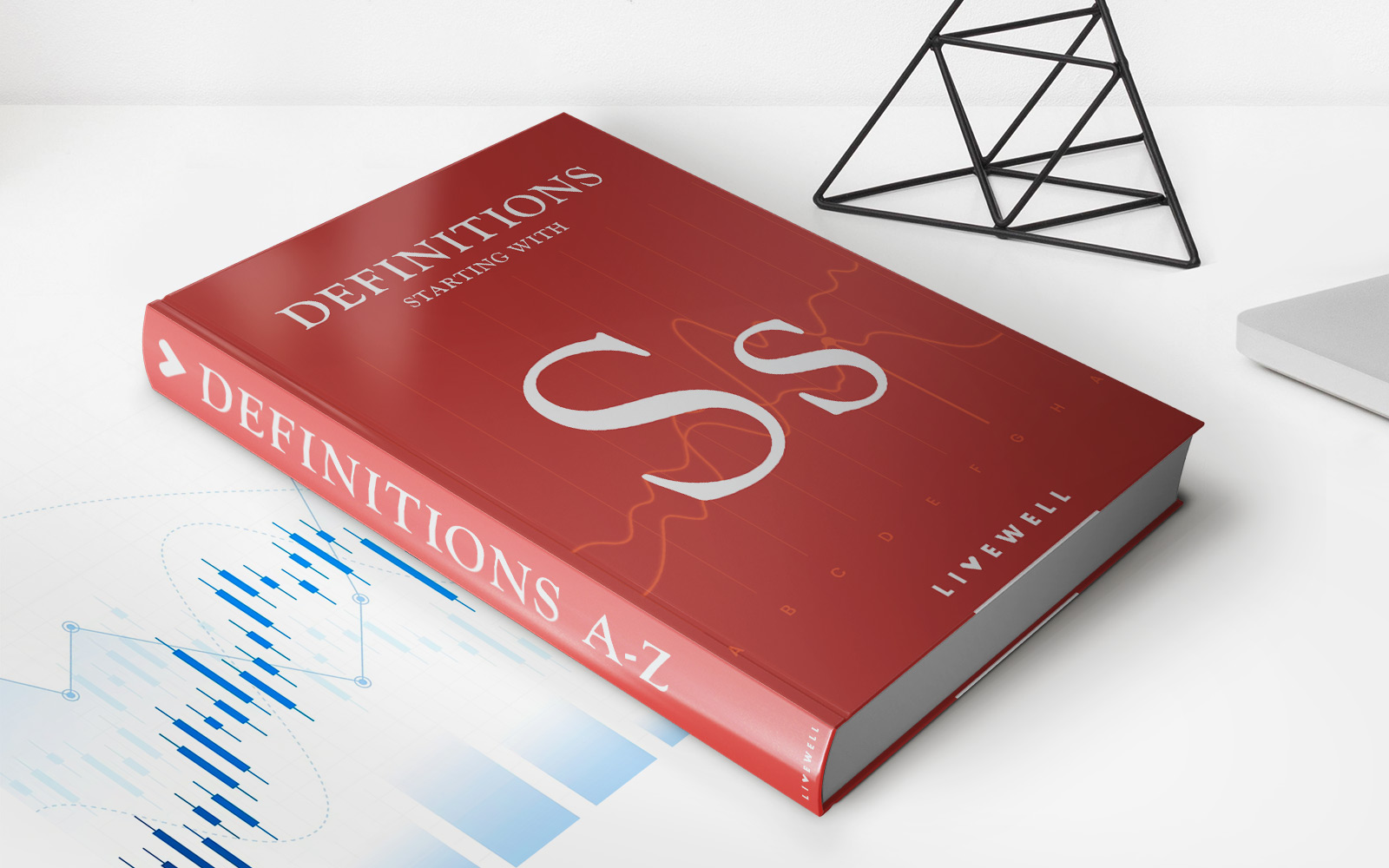

Finance
How To File Bankruptcy On Credit Card Debt
Modified: December 29, 2023
Learn how to file bankruptcy on credit card debt and get your finances back on track. Find expert advice and guidance on managing your finances and dealing with credit card debt.
(Many of the links in this article redirect to a specific reviewed product. Your purchase of these products through affiliate links helps to generate commission for LiveWell, at no extra cost. Learn more)
Table of Contents
- Introduction
- Understanding Credit Card Debt
- Assessing Your Financial Situation
- Exploring Bankruptcy Options
- Deciding to File for Bankruptcy
- Preparing to File Bankruptcy
- Hiring a Bankruptcy Attorney
- Initiating the Bankruptcy Process
- Filing Bankruptcy Forms
- Meeting with the Creditors
- Court’s Decision and Bankruptcy Discharge
- Rebuilding Your Credit after Bankruptcy
- Conclusion
Introduction
Welcome to our comprehensive guide on how to file bankruptcy on credit card debt. In today’s challenging economic climate, many individuals find themselves burdened with overwhelming credit card debt. If you are facing financial hardship and struggling to manage your credit card obligations, bankruptcy may be a viable option to help you regain control of your financial situation.
Credit card debt can quickly accumulate due to high interest rates, late payment fees, and other unexpected expenses. When faced with mounting debt and an inability to make payments, bankruptcy can provide a legal solution to eliminate or restructure your outstanding credit card debts. However, it is important to understand that bankruptcy should not be taken lightly, as it can have significant long-term consequences on your credit score and financial standing.
In this guide, we will walk you through the process of filing bankruptcy on credit card debt, from understanding the nature of credit card debt to rebuilding your credit after bankruptcy. We will provide you with valuable insights and practical tips to help you navigate through this complex and often intimidating process.
It is crucial to note that while this guide provides general information on filing bankruptcy, it should not be considered as legal advice. Every individual’s financial situation is unique, and consulting with a qualified bankruptcy attorney is essential to ensure that you make informed decisions that align with your specific circumstances. With that in mind, let’s delve into the world of credit card debt and the steps involved in filing bankruptcy.
Understanding Credit Card Debt
Before diving into the process of filing bankruptcy on credit card debt, it is crucial to have a clear understanding of what credit card debt entails. Credit card debt refers to the amount of money owed to credit card companies for purchases made using a credit card. When you use a credit card, you essentially borrow money from the credit card issuer to make purchases or cover expenses.
One of the key aspects of credit card debt is the Annual Percentage Rate (APR). The APR represents the cost of borrowing money and is expressed as a percentage. It includes the interest rate and any additional fees or charges associated with using the credit card, such as annual fees or late payment fees. The APR can vary significantly between different credit cards and can have a substantial impact on the total amount of debt.
Managing credit card debt can become challenging when the debt begins to accumulate, and monthly payments become unaffordable. Late payments can result in additional fees, increased interest rates, and ultimately, a negative impact on your credit score. High credit card balances can also affect your credit utilization ratio, which is the amount of credit you are using compared to the total credit available to you. A high credit utilization ratio can have a detrimental effect on your credit score.
It is important to note that credit card debt is considered unsecured debt, meaning it is not backed by collateral. Unlike secured debts such as mortgages or car loans, where the lender has the right to repossess the collateral if payments are not made, credit card issuers do not have this option. However, they can take legal action to recover the outstanding debt, such as filing a lawsuit or garnishing wages.
Understanding the nature of credit card debt lays the foundation for evaluating whether filing bankruptcy is the right path for you. It is crucial to assess your financial situation and explore other debt relief options before deciding on bankruptcy. In the next section, we will discuss how to assess your financial situation to determine if bankruptcy is the right choice.
Assessing Your Financial Situation
Before proceeding with filing bankruptcy on credit card debt, it is essential to assess your financial situation thoroughly. Evaluating your finances will help you determine if bankruptcy is the most suitable option for your circumstances. Here are key factors to consider during the assessment:
- Total Debt: Calculate your total debt, including credit card balances, loans, and any other outstanding obligations. This will give you a clear picture of the magnitude of your debt and inform your decision on whether bankruptcy is necessary.
- Income and Expenses: Analyze your income sources and monthly expenses. Determine if your income is sufficient to cover basic living expenses and make reasonable payments towards your debts. If you find that your income falls short, bankruptcy may become a viable solution.
- Credit Score: Understand your credit score and how it may be impacting your financial options. A low credit score can make it difficult to secure favorable credit terms and may indicate that your debt burden is becoming unmanageable.
- Other Debt Relief Options: Explore alternative debt relief options such as debt consolidation, debt settlement, or credit counseling. These alternatives may provide a more feasible solution to your credit card debt without the need for bankruptcy.
- Potential Consequences: Consider the potential consequences of filing bankruptcy, such as the impact on your credit score, future borrowing opportunities, and any non-exempt assets that may be subject to liquidation.
Assessing your financial situation allows you to make an informed decision about whether bankruptcy is the right choice for you. It is advisable to consult with a reputable bankruptcy attorney who can provide personalized guidance based on your specific circumstances. They will help you understand the implications of bankruptcy and explore all available options before making a final decision.
In the next section, we will dive deeper into the different bankruptcy options available for individuals struggling with credit card debt.
Exploring Bankruptcy Options
When it comes to filing bankruptcy on credit card debt, there are two primary bankruptcy options available for individuals: Chapter 7 and Chapter 13 bankruptcy. Each option has its own set of advantages and considerations, and understanding the differences between the two is crucial in determining which option is most suitable for your financial situation.
Chapter 7 Bankruptcy: Also known as liquidation bankruptcy, Chapter 7 bankruptcy involves the liquidation of non-exempt assets to repay creditors. It is designed for individuals with limited income or resources who are unable to repay their debts. In Chapter 7 bankruptcy, a court-appointed trustee will sell the non-exempt assets, and the funds generated will be distributed to creditors to satisfy a portion of the outstanding debt. The remaining eligible debts are then discharged, providing the filer a fresh start.
One key advantage of Chapter 7 bankruptcy is that it allows for the discharge of most unsecured debts, including credit card debt, with little to no repayment required. However, it is important to note that certain debts, such as student loans, child support, and tax obligations, are generally not dischargeable in Chapter 7 bankruptcy.
Chapter 13 Bankruptcy: Unlike Chapter 7, Chapter 13 bankruptcy involves the creation of a repayment plan to repay a portion of the debts over a three to five-year period. It is designed for individuals with a regular income who can afford to make monthly payments towards their debts, albeit in a structured manner. Chapter 13 bankruptcy allows individuals to keep their assets and catch up on missed mortgage or car loan payments through the repayment plan.
One of the primary advantages of Chapter 13 bankruptcy is the ability to prevent foreclosure or repossession of assets by proposing a repayment plan that allows you to catch up on missed payments. Moreover, Chapter 13 bankruptcy can enable individuals to retain valuable assets that may have been subject to liquidation under Chapter 7 bankruptcy.
Deciding which bankruptcy option to pursue depends on various factors, including your income, assets, debt amount, and long-term financial goals. Consulting with a bankruptcy attorney is crucial at this stage to assess your eligibility and determine the most suitable bankruptcy option for your specific circumstances.
In the next section, we will discuss the process of deciding to file for bankruptcy and the key considerations involved.
Deciding to File for Bankruptcy
Deciding to file for bankruptcy on credit card debt is a significant financial and legal decision that should not be taken lightly. It is essential to carefully evaluate your circumstances and consider the following factors before moving forward with the bankruptcy process:
- Financial Situation: Assess your overall financial situation and determine whether your debt is overwhelming and unmanageable. If you find yourself unable to make minimum payments or facing constant harassment from creditors, bankruptcy may provide the relief you need.
- Other Debt Relief Options: Explore alternative debt relief options, such as debt consolidation or debt settlement, and consider their potential benefits and drawbacks. Bankruptcy should be considered as a last resort when other avenues have been exhausted or are not feasible.
- Long-Term Impact: Understand the long-term consequences of filing for bankruptcy. While bankruptcy can offer a fresh start and relief from overwhelming debt, it can adversely impact your credit score and stay on your credit report for several years.
- Ability to Repay Debt: Evaluate your ability to repay your debts through other means, such as budgeting, increasing your income, or negotiating with creditors. If your financial situation is unlikely to improve significantly in the near future, bankruptcy may provide the necessary relief.
- Legal Advice: Consult with a reputable bankruptcy attorney who can provide personalized guidance based on your specific circumstances. They will evaluate your financial situation, explain the bankruptcy process, and help determine if filing for bankruptcy is the most appropriate course of action.
It is crucial to note that bankruptcy is not a solution for every financial difficulty. Some debts, such as student loans or tax payments, may not be dischargeable through bankruptcy, and it may not address the root causes of your financial struggles. Therefore, it is important to carefully consider your options and seek professional advice before making a final decision.
If you determine that filing for bankruptcy is the best course of action, the next step is to prepare for the bankruptcy process, which we will discuss in the following section.
Preparing to File Bankruptcy
Once you have made the decision to file bankruptcy on your credit card debt, it is important to take the necessary steps to prepare for the bankruptcy process. Proper preparation will help ensure that the process goes smoothly and increases your chances of a successful outcome. Here are the key steps to consider:
- Gather Financial Documents: Collect all relevant financial documents, including bank statements, tax returns, pay stubs, loan agreements, and credit card statements. These documents will be essential in determining your financial situation and completing the necessary bankruptcy forms.
- Complete Credit Counseling: Before filing for bankruptcy, you must complete credit counseling from an approved agency. This counseling session will provide you with information and guidance on budgeting, managing finances, and considering alternatives to bankruptcy. Once completed, you will receive a certificate that must be included in your bankruptcy filing.
- Asset Evaluation: Evaluate your assets to determine if any may be at risk in the bankruptcy process. In Chapter 7 bankruptcy, non-exempt assets may be subject to liquidation, while Chapter 13 allows you to retain your assets through the repayment plan. Understanding your asset situation will help you make informed decisions and potentially protect valuable assets.
- Create a Budget: Establish a comprehensive budget that reflects your current income and expenses. This will help you demonstrate your ability to make payments in a Chapter 13 bankruptcy and may assist in managing your finances moving forward.
- Stop Using Credit: Cease using your credit cards or incurring additional debt once you have made the decision to file bankruptcy. Any charges made shortly before filing may be deemed fraudulent and could complicate your bankruptcy case.
- Seek Legal Assistance: Consult with a qualified bankruptcy attorney who will guide you through the entire bankruptcy process. The attorney will review your financial situation, help determine the most appropriate bankruptcy chapter, and represent you in court proceedings.
Proper preparation and organization are crucial when filing for bankruptcy. By gathering the necessary documents, completing credit counseling, evaluating your assets, creating a budget, and seeking legal assistance, you will be well-equipped to move forward with the bankruptcy process.
In the next section, we will discuss the importance of hiring a bankruptcy attorney and the role they play in navigating the complexities of bankruptcy.
Hiring a Bankruptcy Attorney
When filing bankruptcy on credit card debt, it is highly recommended to hire a qualified bankruptcy attorney. Navigating the complexities of bankruptcy law can be challenging, and an experienced attorney can provide invaluable guidance and ensure that your rights and interests are protected throughout the process. Here are the key reasons why hiring a bankruptcy attorney is essential:
- Expert Knowledge: A bankruptcy attorney specializes in bankruptcy law and is well-versed in the intricacies of the legal system. They have extensive knowledge of the bankruptcy code, court procedures, and local rules and regulations, allowing them to navigate the process efficiently and effectively on your behalf.
- Counsel on Bankruptcy Options: A bankruptcy attorney will assess your financial situation and provide guidance on the most appropriate bankruptcy chapter for your specific circumstances. They will explain the differences between Chapter 7 and Chapter 13 bankruptcy, outline the eligibility requirements, and help you make informed decisions based on your goals and objectives.
- Paperwork and Documentation: Filing for bankruptcy requires a substantial amount of paperwork and documentation. An attorney will assist you in preparing and reviewing all the necessary forms and supporting documents to ensure accuracy and completeness. They will also handle communication with the bankruptcy court and creditors, relieving you of the administrative burden.
- Legal Protection: A bankruptcy attorney will protect your legal rights throughout the process. They will advocate on your behalf, represent you in court hearings and meetings, and negotiate with creditors to ensure a fair and favorable outcome. Having legal representation can provide peace of mind and help you navigate potential challenges or disputes that may arise during the bankruptcy process.
- Financial Guidance: In addition to their legal expertise, a bankruptcy attorney can provide valuable financial guidance. They can review your budget, evaluate your income, expenses, and debts, and help you develop a strategic plan for managing your finances both during and after bankruptcy.
When hiring a bankruptcy attorney, it is important to choose someone who is experienced, reputable, and knowledgeable in bankruptcy law. Take the time to research and consult with multiple attorneys to find the best fit for your needs. A good attorney will provide personalized attention, explain the bankruptcy process in a clear and understandable manner, and guide you toward a fresh financial start.
In the next section, we will discuss the initiation of the bankruptcy process and the necessary steps to commence your bankruptcy case.
Initiating the Bankruptcy Process
Once you have made the decision to file bankruptcy on your credit card debt and have hired a bankruptcy attorney, the next step is to initiate the bankruptcy process. This involves several essential steps to begin your bankruptcy case. Here’s what you can expect:
- Initial Consultation: Your bankruptcy attorney will conduct an initial consultation to gather all relevant information about your financial situation. They will review your debts, assets, income, and expenses to determine the most appropriate bankruptcy chapter for you.
- Means Test: If you decide to proceed with Chapter 7 bankruptcy, your attorney will assist you in completing the means test. This test compares your income to the median income of your state to determine if you qualify for Chapter 7 or if Chapter 13 is a more suitable option.
- Preparing Bankruptcy Petition: Your attorney will compile the necessary paperwork and documentation, including your bankruptcy petition, schedules, and statements. These documents provide a comprehensive overview of your financial situation and are filed with the bankruptcy court.
- Filing Bankruptcy Forms: Your attorney will file your bankruptcy forms electronically with the bankruptcy court. This officially initiates your bankruptcy case and triggers an automatic stay, which halts all collection actions, including debt collection calls and lawsuits, from the moment of filing.
- Meeting of Creditors: Approximately four to six weeks after filing, you will attend a meeting of creditors, also known as a 341 meeting. This is a mandatory meeting where you will answer questions about your financial affairs under oath. Your attorney will guide you through the meeting and ensure your rights are protected.
- Completion of Financial Management Course: After filing bankruptcy, you must complete a financial management course from an approved agency. This course provides education on budgeting, money management, and credit. Once completed, you will receive a certificate that must be filed with the court.
- Court’s Decision and Bankruptcy Discharge: Following the meeting of creditors, the court will review your case and determine the outcome. In Chapter 7 bankruptcy, if no objections are raised, you can typically expect to receive a discharge of your eligible debts within three to four months. In Chapter 13 bankruptcy, you will proceed with the repayment plan outlined in your bankruptcy petition.
Throughout the bankruptcy process, it is crucial to maintain open communication with your bankruptcy attorney. They will keep you informed about the progress of your case, guide you in completing required tasks, and address any concerns or questions you may have. By working closely with your attorney, you can ensure a smooth and successful bankruptcy process.
In the next section, we will discuss the importance of filing bankruptcy forms accurately and thoroughly to avoid complications in your bankruptcy case.
Filing Bankruptcy Forms
When filing bankruptcy on your credit card debt, one of the crucial steps is completing and filing the necessary bankruptcy forms. These forms provide detailed information about your financial situation and are submitted to the bankruptcy court. Accuracy and thoroughness in filling out these forms are paramount to ensure a successful bankruptcy case. Here’s what you need to know:
- Petition and Schedules: The main form to be filed is the bankruptcy petition, which initiates your case. This form requires personal information such as your name, address, and social security number. Additionally, you will need to complete schedules that outline your assets, liabilities, income, expenses, and other financial details.
- Statement of Financial Affairs: This form requires you to disclose information about your income history, employment, financial transactions, and any legal actions involving debt or property. It is crucial to be transparent and provide accurate details to avoid any implications of fraud.
- Means Test Forms: If you are filing for Chapter 7 bankruptcy, you will need to complete means test forms. These forms compare your income to the median income of your state to determine your eligibility for Chapter 7 or if Chapter 13 is more appropriate.
- Exemption Forms: Exemption forms are used to claim certain assets as exempt from the bankruptcy estate, meaning they are protected and cannot be liquidated to repay creditors. Be sure to accurately list your assets and research the applicable exemption laws in your state.
- Statement of Intention: The statement of intention form informs the court and creditors of your intentions regarding secured debts. It specifies whether you plan to surrender the collateral, reaffirm the debt and continue making payments, or redeem the collateral by paying its current value.
It is crucial to thoroughly and accurately complete these forms. Any omissions or inaccuracies can lead to complications or even allegations of bankruptcy fraud. Take the time to gather all necessary information, review your financial records, and consult with your bankruptcy attorney to ensure the forms are filled out correctly.
Once you have completed the forms, your attorney will review them for accuracy and completeness. They will then file the forms electronically with the bankruptcy court, initiating your bankruptcy case. It is important to note that filing fees are required to be paid at the time of filing, although fee waivers may be available for those who qualify based on their income level.
Remember that these bankruptcy forms are legal documents, and providing false information can have serious consequences. Work closely with your bankruptcy attorney throughout the process to ensure that the forms are filed accurately and in compliance with bankruptcy laws.
In the next section, we will discuss the meeting held with creditors as part of the bankruptcy process.
Meeting with the Creditors
As part of the bankruptcy process, you will be required to attend a meeting with your creditors, known as a 341 meeting or a meeting of creditors. This meeting provides an opportunity for the bankruptcy trustee and your creditors to ask questions about your financial affairs and the information provided in your bankruptcy forms. Here’s what you need to know about the meeting with creditors:
- Time and Location: The meeting is typically scheduled within 20 to 40 days after filing for bankruptcy. It is held at a designated location, usually at the bankruptcy court or a nearby meeting room. Your bankruptcy attorney will inform you of the specific details of the meeting.
- Attendance: You, your bankruptcy attorney, and the bankruptcy trustee will be present at the meeting. Creditors may also attend, although it is uncommon for them to do so. The meeting is open to the public, but it is primarily a procedural meeting conducted by the trustee.
- Questioning by the Trustee: The bankruptcy trustee, appointed by the court, will conduct the meeting. They will ask you questions regarding the information provided in your bankruptcy forms, your financial affairs, and any other relevant matters. It is crucial to answer truthfully and to the best of your knowledge. Your bankruptcy attorney will guide you and ensure your rights are protected.
- Questioning by Creditors: Creditors have the opportunity to attend the meeting and ask questions related to your debts and financial situation. However, it is uncommon for creditors to attend, especially in consumer bankruptcy cases. If creditors do attend, they are typically limited in the questions they can ask and must follow the guidelines set by the bankruptcy court.
- Preparation: Your bankruptcy attorney will prepare you for the meeting, inform you of the types of questions that may be asked, and ensure that you are well-versed in your financial details. They will also accompany you to the meeting and advocate on your behalf if needed.
- Duration and Outcome: The meeting with creditors is relatively brief, typically lasting about 10 to 15 minutes. Its purpose is to ensure that all parties have an opportunity to gather information and address any concerns. After the meeting, the bankruptcy process continues, and the trustee will review your case and make recommendations to the court.
It is important to approach the meeting with creditors calmly and honestly. Remember that the meeting is a standard and necessary part of the bankruptcy process. Your bankruptcy attorney will prepare you for the meeting, answer any questions you may have, and ensure that your rights and interests are protected throughout the process.
Following the meeting with creditors, the bankruptcy process will progress, and the court will review your case to determine the appropriate next steps. Your bankruptcy attorney will guide you through the subsequent proceedings and work towards obtaining a favorable resolution for your credit card debt.
In the next section, we will discuss the court’s decision and the ultimate goal of obtaining a bankruptcy discharge.
Court’s Decision and Bankruptcy Discharge
After filing for bankruptcy on your credit card debt and completing the meeting with creditors, the court will review your case and make a decision based on the information provided. This decision ultimately leads to either a bankruptcy discharge or an appropriate resolution based on the bankruptcy chapter you filed under. Here’s what you need to know:
- Chapter 7 Bankruptcy: In Chapter 7 bankruptcy, the court will review your assets, liabilities, income, and expenses to determine if you meet the criteria for a discharge of your eligible debts. If no objections are raised, you can typically expect to receive a discharge within three to four months after the meeting of creditors. Once discharged, the bankruptcy court will order the elimination of your eligible debts, including credit card debt.
- Chapter 13 Bankruptcy: In Chapter 13 bankruptcy, the court will review your proposed repayment plan, which outlines how you will repay a portion of your debts over a three to five-year period. If the court approves your plan, you will make regular payments to a bankruptcy trustee who will distribute the funds to your creditors according to the plan. Once you successfully complete the repayment plan, any remaining eligible debts will be discharged.
- Objections: Creditors or the bankruptcy trustee may raise objections during the bankruptcy process. Common reasons for objections include suspected fraud, improper asset valuation, or failure to meet the requirements of the bankruptcy chapter. Your bankruptcy attorney will assist in addressing these objections and fighting for a favorable outcome.
- Effects of Bankruptcy Discharge: A bankruptcy discharge is the court’s official order to eliminate your eligible debts. Once discharged, you are no longer legally obligated to repay those debts. This provides you with a fresh start and an opportunity to rebuild your financial life without the burden of credit card debt. However, it is important to note that certain debts, such as student loans, tax obligations, and child support, may not be dischargeable in bankruptcy.
- Completion of Post-Bankruptcy Requirements: After receiving a discharge, you may be required to complete additional post-bankruptcy requirements. This may include attending financial education courses or providing documentation to the court or bankruptcy trustee. It is essential to fulfill these requirements to ensure the smooth completion of your bankruptcy case.
Obtaining a bankruptcy discharge is the ultimate goal of the bankruptcy process. It provides you with a fresh financial start and the opportunity to regain control of your financial future. Consulting with a reputable bankruptcy attorney and following their guidance will greatly increase your chances of obtaining a successful discharge and navigating the complexities of bankruptcy effectively.
In the final section, we will discuss rebuilding your credit after bankruptcy and taking steps to improve your financial well-being.
Rebuilding Your Credit after Bankruptcy
After receiving a bankruptcy discharge and successfully completing the bankruptcy process for your credit card debt, it’s time to focus on rebuilding your credit. Although bankruptcy has a negative impact on your credit score, it is not the end of your financial journey. With strategic planning and responsible financial habits, you can start rebuilding your creditworthiness. Here are some steps to consider:
- Create a Budget and Stick to It: Developing a realistic budget is essential for managing your finances effectively. Track your income and expenses, prioritize debt payments, and strive to live within your means. Making timely payments on any remaining debts will demonstrate responsible financial behavior to potential creditors.
- Get a Secured Credit Card: A secured credit card can be a useful tool for rebuilding credit. With a secured card, you provide a cash deposit as collateral, which serves as your credit limit. Responsible use and timely payments on this card can help rebuild your credit history over time.
- Pay Bills on time: Consistently paying your bills on time, including rent, utilities, and other financial obligations, is crucial for building a positive credit history. Late payments can have a detrimental impact on your credit score. Set up automatic payments or reminders to ensure you never miss a due date.
- Monitor Your Credit Reports: Regularly review your credit reports from the major credit bureaus (Equifax, Experian, and TransUnion) to ensure the accuracy of the information reported. Dispute any errors or inaccuracies promptly to maintain the integrity of your credit profile.
- Use Credit Responsibly: If you choose to use credit cards or other forms of credit, do so responsibly. Keep your utilization ratio low, meaning you use only a small percentage of your available credit limit. Pay off your balances in full each month to avoid high-interest charges and potential debt accumulation.
- Build a Positive Payment History: Gradually rebuild your credit history by making small, manageable purchases and paying them off in full and on time. Consistently demonstrating responsible credit behavior will help improve your creditworthiness over time.
- Consider a Credit Builder Loan: A credit builder loan is designed to help individuals with poor or no credit history establish a positive credit profile. These loans require you to make regular payments over a specific period. By successfully completing the loan, you demonstrate your creditworthiness to future lenders.
- Patience and Persistence: Rebuilding credit takes time, so it’s important to be patient and persistent in your efforts. Use credit responsibly, stay committed to your financial goals, and over time, you will see gradual improvements in your credit score and financial standing.
Remember, rebuilding your credit after bankruptcy is a gradual process that requires discipline and perseverance. As you implement these strategies, be mindful of your overall financial well-being and make choices that align with your long-term goals. With time and responsible financial habits, you can rebuild your credit and work towards a brighter financial future.
Lastly, consider seeking advice from a reputable credit counselor or financial advisor who can guide you in the credit rebuilding process and provide personalized strategies based on your unique financial situation.
With this information, you are now equipped to navigate the process of filing bankruptcy on credit card debt and understand the steps to rebuild your credit afterward. Remember to consult with a qualified bankruptcy attorney and financial professionals for personalized guidance tailored to your specific circumstances.
Good luck on your journey towards financial recovery!
Conclusion
Facing overwhelming credit card debt can be a daunting experience, but filing bankruptcy can provide a means to regain control of your financial life. Throughout this comprehensive guide, we have explored the process of filing bankruptcy on credit card debt and the steps involved in navigating this challenging journey.
We began by understanding credit card debt and the impact it can have on your financial well-being. We then delved into assessing your financial situation and exploring alternative debt relief options before deciding on bankruptcy. We discussed the two primary bankruptcy options available, Chapter 7 and Chapter 13, and the factors to consider in making this critical decision.
Preparation played a vital role in our guide, as we examined the importance of gathering financial documents, completing credit counseling, evaluating assets, creating a budget, and ultimately hiring a qualified bankruptcy attorney to guide you through the process.
We then discussed the initiation of the bankruptcy process, including filing bankruptcy forms accurately and thoroughly. The meeting with creditors, court’s decision, and the ultimate goal of obtaining a bankruptcy discharge were also addressed, underscoring the importance of legal representation and diligent preparation.
Finally, we highlighted the process of rebuilding your credit after bankruptcy. By creating a budget, responsibly using credit, making timely payments, and monitoring your credit reports, you can gradually rebuild your creditworthiness and pave the way towards a brighter financial future.
It is important to remember that while this guide provides a comprehensive overview, seeking personalized guidance from a reputable bankruptcy attorney is essential. They will evaluate your unique circumstances, provide tailored advice, and guide you through the complexities of the bankruptcy process.
Recovering from credit card debt and filing bankruptcy is not an easy journey, but with the right support, knowledge, and perseverance, you can emerge with newfound financial freedom. Take control of your financial future and embark on a path to financial stability and success.
Best of luck on your journey towards a fresh start!
